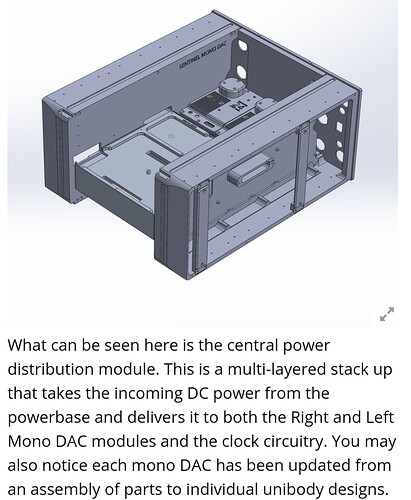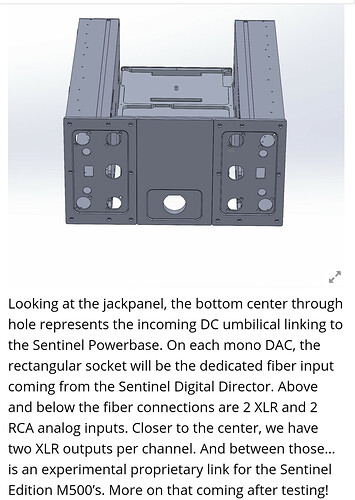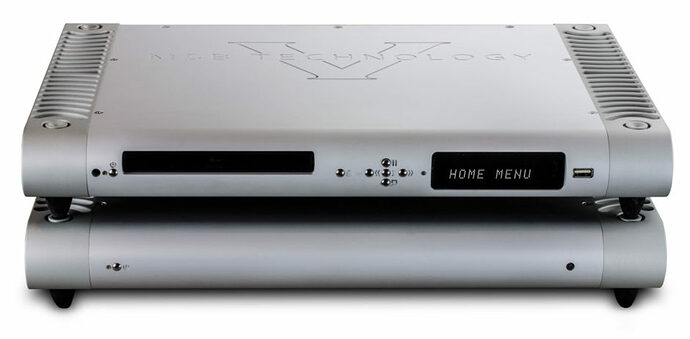To be honest, I tend to think of Apex as the replacement given the all new boards.
Yes, big swinging DACs ![]()
Fun but there isn’y anything new here. Its a verbal rehash of the promotiomnal bumph plus some extracts pulled rom the early listening report from HiFi+ published some weeks ago.
Nicely and elegantly done but but if you have been following this story then you will need to wait for the full review promised later.
What’s nice about Jacob doing the review is he is a long term owner of the Vivaldi stack.
I just wanted to share with the group that it is now clear the new top of the line MSB DAC, currently called “Sentinel,” will also be a mono DAC structure.
The architecture will be 4 boxes (unless I am mistaken):
Digital director
2 Mono DACs
Power Supply
It seems like two of the best DAC companies in the world agreed that (a) Mono DAC and (b) proprietary, noise-isolating cabling between the components, Is the best way to exceed the performance of their current state of the art.
(Not to derail this dCS Varèse thread)
Not quite. MSB’s Sentinel is being designed for mono DAC modules that fit into a single chassis. It’s not an actual mono DAC a la Varèse.
You might want to re-read Dan’s post;
This is a multi-layered stack up that takes the incoming DC power from the powerbase and delivers it to both the Right and Left Mono DAC modules and the clock circuitry.
From what I understood from the webinar breaking the co-dependence of the two channels on the power supply was one of the main points of the dual mono architecture in the Varèse.
In my book If a piece of 2-channel electronics has one power cord it is stereo. Period.
Thank you Anup. I read it, but to be honest it wasn’t entirely clear to me if it were one or two chasis. Upon further investigation I believe you are correct.
This architecture is one separate power module, driving the two mono DACs via one power cord (center hole), and two separate fiber inputs, from the DD, driving each mono DAC:
Ironically, it’s precisely because MSB designs have always had an integral Femto Clock within their DAC that it won’t be so easy for them to design a true mono DAC; MSB doesn’t have the history nor experience of designing proper external Clocking, let alone one that precision synchronises two physically separate DACs ![]()
dCS Tomix is no simple feat.
Just playing devil’s advocate:
MSB might reply: “Since we don’t make transports, we only need to clock one incoming data stream, and this is best done internally, without clock cables, other noisy components, a separate box, a separate power supply, etc.”
I don’t have an opinion on this personally, just say’IN
; )
They have had Transports in the past!
In any case, such a statement would have been true all the way until they introduced Digital Director; which requires their Femto Clock signal to be fed back out into DD, breaking any such positioning.
By the way, don’t you think all this MSB discussion deserves its own separate thread? ![]()
New video of photographing the Varèse
Don’t forget Esoteric! As far as I’m aware they were the first to release mono DACs with the D-01 way back in the early 2000s.
Interesting! I didn’t realise they were mono DACs. Looks like Esoteric’s had a few generations of them. Perhaps not a surprise that Esoteric is the one other manufacturer with significant external clocking experience.
I just took a look at their Grandioso D1X Monoblock DACs; separate from the source AES signal links, they have a proprietary L-R “Channel link connector” (HDMI interfaced) between the mono DACs, presumably to keep them in sync.
I’m very happy with the current “stereo” DAC structure in the V/R/B (and most other manufacturers). If I owned two separate mono DACs I would be constantly worried that things aren’t exactly in sync and the imaging would be off (!)
(I am happy if I am the only one with this worry!)
; )
And the reduced box count ![]()
Precisely why dCS had to literally invent new patented technology! ![]()
It’ll be interesting to see how Stereophile goes about measuring this; they’ve never had to measure left-right variation. No doubt dCS will advise them on how best to measure this, but I guess the simplest way might be to compare left-right channels have identical jitter spectral component measurements? ![]()
I am not sure about this for the intended purpose. Jitter is concerned with timing accuracy and/or consistency whereas the issue here is synchronicity. It would be possible to have perfect accuracy for both DACs ( jitter = immeasurable) but with each in a different time “zone” to the other.
Isn’t it more about lowering noise with the mono configuration?



